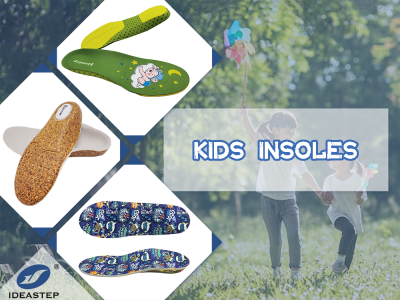
Children’s feet are in a crucial stage of development, and providing proper support and comfort is essential for their overall foot health. This article aims to delve into the research on materials used in children’s shoe insoles, exploring their benefits, considerations, and potential impact on foot development.
1. Cushioning and Shock Absorption
One of the primary functions of shoe insoles is to provide cushioning and shock absorption. Materials such as foam, gel, and air-filled pockets are commonly used for this purpose. Foam insoles offer a balance between cushioning and support, while gel insoles provide enhanced shock absorption. Air-filled pockets distribute pressure evenly, reducing the impact on children’s developing feet.
2. Arch Support
Proper arch support is crucial for maintaining the natural alignment of children’s feet. Materials like EVA (ethylene-vinyl acetate) and thermoplastic elastomers (TPE) are often used to create arch supports in shoe insoles. These materials provide the necessary structure and stability to support the arches and prevent excessive pronation or supination.
3. Breathability and Moisture Control
Children’s feet are prone to sweating, which can lead to discomfort and potential foot problems. Breathable materials such as mesh, perforated foam, or moisture-wicking fabrics are commonly incorporated into shoe insoles to enhance airflow and moisture control. This helps to keep the feet dry, reducing the risk of bacterial or fungal infections.
4. Durability and Longevity
Children are often active and energetic, putting their shoes and insoles through rigorous use. Therefore, durability is an important consideration when selecting materials for children’s shoe insoles. Materials like polyurethane (PU) foam or rubber compounds are known for their resilience and ability to withstand repeated impact and wear.
5. Sensory Stimulation
In recent years, there has been a growing interest in incorporating sensory stimulation into children’s shoe insoles. Materials with textured surfaces or strategically placed pressure points can provide sensory feedback, promoting better balance, coordination, and proprioception.
6. Considerations for Allergies and Sensitivities
Some children may have allergies or sensitivities to certain materials commonly used in shoe insoles, such as latex or certain synthetic compounds. It is crucial to consider hypoallergenic options or alternative materials to ensure the comfort and safety of children with specific sensitivities.
Conclusion:
When selecting shoe insoles for children, it is important to consider the specific needs of their developing feet. Materials that provide cushioning, arch support, breathability, durability, and sensory stimulation are vital for their foot health and overall comfort. Additionally, considering any allergies or sensitivities is crucial to avoid potential adverse reactions. By understanding the benefits and considerations of different materials, parents and caregivers can make informed choices to support the proper development and well-being of children’s feet. We have designed and manufactured a variety of children’s insoles with different materials and functions. If you are interested in them, you can continue to visit this page (https://www.aideastep.com/kids-insoles/) and tell us your needs.
